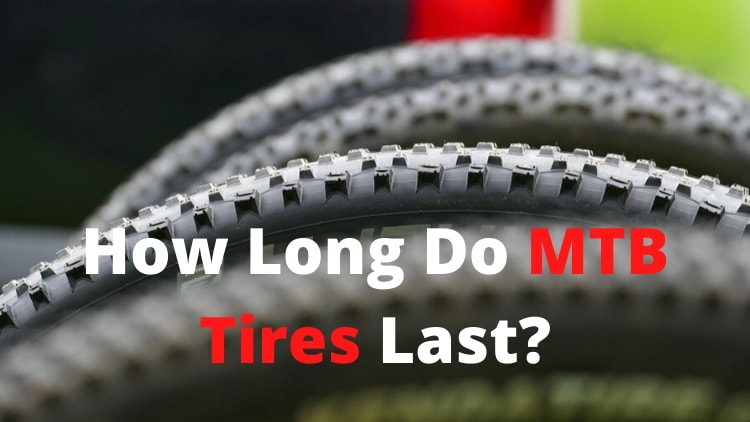You bought a brand-new Mountain Bike earlier this year and have been hitting the local trail every chance you get.
Being a newer rider, you haven’t really “pushed” your bike and barring a few minor repairs in the gears and brakes, there have been no major maintenance expenses just yet.
Realizing that you love riding more than ever, you start riding your local streets and greenways on the days the trail is too wet or you just can’t make it. One day, you pass a fellow biker riding the opposite way of you on the Greenway. Stopping for a quick chat, he mentions that he also Mountain Bikes, but prefers to use his Hybrid for the pavement. Not only is his Hybrid more efficient, he also wants to save his Mountain Bike Tires from wearing down on the Greenway.
Given how you’ve been riding, you begin to wonder, “How long will my Mountain Bike Tires Last?”
While there’s no guarantee to the life expectancy of any given tire, there are ways for you to determine how long your Mountain Bike Tires will last. Generally, a biker who rides fast on rough and rocky trails 5 days a week, can expect the rear tire to last 2-3 months before needing replaced. If you’re a more reserved rider, sticking to softer dirt and smooth pavement every other weekend, you may be able to get 2 – 3 years out of a set of Mountain Bike Tires. There are plenty of other factors that affect tire life, so make sure you continue to read below.
Factors that affect the life of your Mountain Bike Tire:
- Riding Style –
Your riding style will be the most determining factor when it comes to tire wear. The harder you ride, the faster your tire will wear.
- What you ride –
Smooth and soft dirt is the optimal terrain, tires will lose tread faster on pavement and even faster on trails filled with rocks and roots.
- How often you ride –
Mileage is also one of the best ways to determine how long your Mountain Bike Tires will last. The more you ride, the more your tires will wear.
- Tire Maintenance and Care –
Running the correct PSI and making sure you store your tires in a cool and dry place will prevent any unnecessary maintenance damage.
When should I change my Tires?
Your tires will determine how much traction you maintain while cornering and how much braking force you can apply when stopping or slowing down, therefore, it’s vital to be aware when they’ve reached the end of their lifecycle.
Spinning out on a steep climb can be frustrating and sliding out on a highspeed turn can be dangerous. Replace your tires when you feel a lack of confidence in stability or when they’re no longer effective.
But don’t feel rushed to replace them as soon as you start to see the tread wear down. Depending on how you intend to ride, slightly worn tires may still be effective. While some riders immediately notice the lack of performance, there are those of us who can deal with a worn tire if its still getting the job done.
Regardless, you should always replace your tires if you notice the following:
- Severely Worn Tread/Undercut Knobs –
- Cut or Damaged Side walls –
- Dry Rotted Tires –
How much do new tires cost?
You can find Mountain Bike Tires as cheap as $12 and as expensive as $130.
For most riders, a quality set of Mountain Bike tires will cost $20-50 per tire. People who ride Downhill or those who compete in races can expect to pay closer to $85 per tire. While you can easily find quality Mountain bike tires in the $20-30 price point, you may want to shell out a few more bucks for the performance tires at this Tier.
Although Mountain Bike Tires can seem relatively expensive, they are one of the most important upgrades/replacements you can perform on your bike.
Should I replace both tires?
You will quickly notice how much faster the rear tire wears down compared to the front. Where cars distribute weight evenly among all 4 tires, the rear tire on your bike will handle majority of the weight and will often take most of the beating while riding on and off the trail.
One of the first things you may question when it comes time to buy new tires, is if you need to replace both at the same time.
Luckily, you can often get away with only buying one new tire at a time. If the rear tire wears out significantly more than the front, you can simply swap the rear with the front tire and replace the front with the new tire. This does not apply if your tires have conflicting tread or width.
Make sure you always have the newest tire on the front. While it may seem intuitive to put the new tire on the rear, considering how fast it wears, the front tire will always need to have the most traction. If your front tire were to slide out through loss of traction, it can be more dangerous than if it were to be the rear tire.

